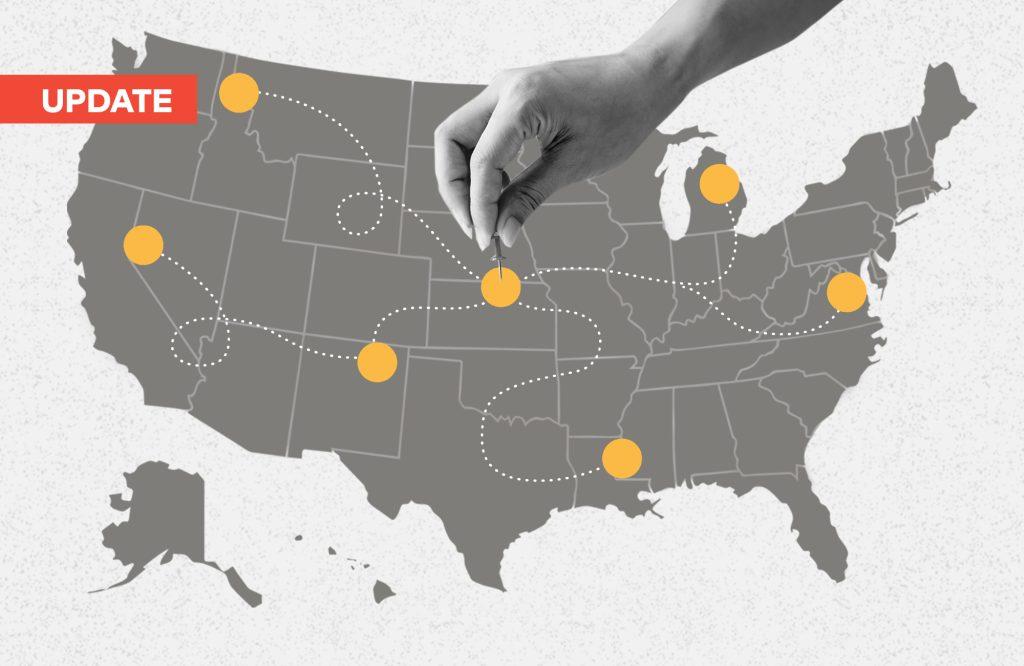Regulatory revitalization of the legal services landscape in the province of British Columbia appears underway.
On March 10, the governance of the Law Society of British Columbia unanimously agreed to ask the government of British Columbia to bring legislative amendments into force — changes that would broaden their regulatory authority over paralegals in the province. A key outcome of this request could be the regulation of all the province’s legal service providers – lawyers, paralegals, and notaries – under a single provincial regulator.
The Law Society of British Columbia‘s decision follows receipt of the Ministry of the Attorney General’s intentions paper in September 2022, and the Society of Notaries Public of British Columbia’s response to the ministry’s paper in November 2022. The intention to reform the legal services landscape was first announced by the ministry in March 2022.
Over the last decade the province has embarked upon several unsuccessful attempts to integrate the legal services performed by lawyers, paralegals, and notaries under a single regulator. For example, in 2014, the Law Society of British Columbia adopted a recommendation from the Legal Services Regulatory Task Force to seek amendments to the province’s Legal Profession Act allowing for the regulation of paralegals. The necessary amendments received Royal Assent, however they have never been proclaimed in force.
Throughout this time, both regulators have encouraged government to focus, exercise its leadership and commit to helping them resolve the challenges that they have been facing. The journey has not been easy.
The rationale for regulatory reform is simple
The rationale for reforming the legal services landscape under a single statute and single regulator model for British Columbia is simple from the ministry’s point of view: Too many people cannot afford the services of a lawyer and proceed unrepresented. More than half will seek advice from someone other than a lawyer. The demand on legal clinics has been excessive despite increased resources. Requiring more pro bono work by lawyers or facilitating legal services through other disparate approaches is not the complete solution. The changes are aimed at improving access to legal services and enhancing focus on public protection.
The reforms are also directed at improving efficiency, effectiveness, and flexibility of the regulatory framework for British Columbia’s legal services. The ministry contends that “access to legal services is also… a governance issue”. It requires the regulatory framework for governance of the legal professions to “prioritize the public interest over the interests of the professionals it regulates.”
The provision of legal services in BC is complex
Regulating the legal professions with one voice has been increasingly challenging. British Columbia’s legal services landscape is complex, involving three separate service providers, two enabling statutes, and two distinct regulators.
Lawyers in British Columbia are regulated by the Legal Profession Act, which establishes and empowers the Law Society of British Columbia to license lawyers to practice law. Paralegals are not directly regulated in the province. Instead, Law Society of British Columbia rules require paralegals to provide some legal services under the supervision of lawyers who are responsible for their conduct. Under these rules, lawyers may only supervise up to two paralegals at any time.
British Columbia’s notaries are uniquely positioned in that they have a broader practice authority than notaries in many other Canadian jurisdictions. British Columbia’s notaries fall under the Notaries Act and their conduct is regulated by the Society of Notaries Public of British Columbia. Although the current scope of practice includes matters that are otherwise typically limited to lawyers (e.g., drafting of wills and real estate conveyancing), notaries have been seeking an expanded scope of practice for many years.
A key goal of British Columbia’s regulatory reform is to integrate the provision of legal services under a single statute and regulator. The ministry’s paper contends that legal regulators across Canada are broadening their oversight to include the regulation of paralegals and other legal services in this manner. For example, in seeking to regulate paralegals, British Columbia would join Ontario as one of two Canadian provinces regulating paralegals and lawyers under harmonized legislation and a single regulator model.
The benefits of the single statute, single regulator model
The benefits of this model seem clear to the ministry. A single statute ensures a consistent expectation of professional accountability for lawyers, notaries, and paralegals. A single regulator with a clear mandate to facilitate access for legal services can identify gaps, as well as opportunities, in underserved areas. The need to coordinate strategic guidance and operational requirements across distinct regulators or entities is streamlined and administrative challenges or, at worst, jurisdictional disputes are avoided. The single statute and single regulator model are viewed by the ministry as assuring “the public’s confidence that the complete provision of legal services in the province is being regulated in the public’s interest and not in the interest of any one profession.”
Inspiration for regulatory revitalization and the role independent experts can play
The ministry hopes to modernize the governance framework in a way that places increased emphasis on regulating the system underlying the provision of legal services in British Columbia, and not just individual licensees. Considering how best to implement this framework, the ministry notes inspiration from the Law Society of British Columbia, which commissioned a governance review in 2021 from independent governance expert Harry Cayton (Cayton report).
Though the report was drafted for the Law Society, the study was credited for providing several critical recommendations for efficient and effective governance frameworks.
Cayton’s recommendations included proposals for:
- A more streamlined and agile board.
- Reductions in the number of elected board members while increasing the proportion of publicly appointed members who not only represent geographic diversity, but an optimum level of skill sets.
- Reductions in the number of committees.
- Implementing conflict of interest reduction measures, such as separating the regulator’s disciplinary tribunal from investigation and prosecution, creating independence of adjudication.
- Identifying and managing risks of harm to the public where the provision of legal services is concerned.
- Improving efficiency and effectiveness of governance through right-touch regulation.
The questions ahead
Many questions must be addressed as the province moves towards revitalizing the regulatory framework for legal services. Some of these questions include:
- How will legal services be legislatively, strategically, and operationally harmonized under one governing authority?
- Can a clear mandate be implemented that lays out the responsibility for regulation of all current and future legal service providers?
- Can a flexible licensing framework be implemented for lawyers, paralegals, and notaries that ensures the public can obtain legal services that meets their needs?
- Will regulatory reform be implemented and interpreted in a manner that enhances access to justice for the public, while addressing obligations to support reconciliation with Indigenous peoples in the legal system?
Equally uncertain is the degree to which the single statute, single regulator model may impact the principle of self-regulation for at least two of the legal professions impacted in this plan. The ministry has made it clear that it has no intention of implementing changes that will interfere with the ability of lawyers or notaries to self-regulate. Nevertheless, the ministry is attuned to the significant role that the province’s legislative authority plays in enabling regulatory jurisdiction, building structures, and implementing processes and policies for the regulation of professions in British Columbia.
The developments will be interesting to watch as they unfold.
Ken Osborne is a military veteran, lawyer, and regulator with experience leading the licensing and accreditation processes for lawyers and paralegals at the Law Society of Ontario. He writes on various topics impacting the world of regulation and licensing.
MORE VOICES ARTICLES

Trust on trial: Navigating the murky waters of scientific integrity
As fraudulent research papers flood academic journals, the sanctity of scientific discovery is under siege, challenging the very foundation of trust we place in peer-reviewed publications. With AI now both a tool for creating and detecting such deceptions, the urgency for a robust, independent regulatory framework in scientific publishing has never been greater.

Do regulators deserve deference?
In a pivotal moment for regulatory law, the U.S. Supreme Court’s review of the Chevron doctrine could redefine the bounds of deference courts give to regulatory agencies, potentially inviting more challenges to their authority. This critical examination strikes at the heart of longstanding legal principles, signaling a significant shift in the landscape of regulatory oversight and its interpretation by the judiciary.

From Frankenstein to Siri: Accountability in the era of automation
As AI advances in sectors from health care to engineering, who will be held accountable if it causes harm? And as human decision-makers are replaced by algorithms in more situations, what will happen to uniquely human variables like empathy and compassion? Harry Cayton explores these questions in his latest article.

Regulating joy: The risky business of festivities
In his final Voices article of 2023, Harry Cayton reflects on our enthusiasm for participating in cultural festivities that often cause injuries or even deaths, which has led some governments to attempt to regulate these risky celebrations.

Building my regulator of tomorrow with LEGO® bricks
What should the regulator of tomorrow look like? While there may be no definitive vision, contributor Rick Borges gets creative with answering this important question, drawing inspiration from a favorite toy to ‘build’ a model of an effective future regulator.

‘Thin’ and ‘thick’ rules of regulation: Cayton reviews Daston’s history of what we live by
Lorraine Daston explores fascinating examples of rulemaking throughout history in her new book, ‘Rules: A Short History of What We Live By.’ In this article, Harry Cayton discusses what regulators can learn from Daston’s work.








